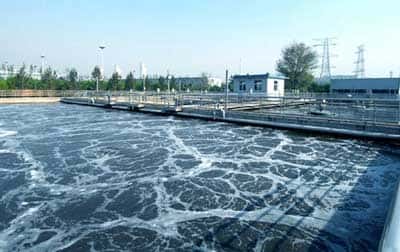7 Basic Principles of Industrial Wastewater Treatment
This article about “7 Basic Principles of Industrial Wastewater Treatment” is posted on IROCHEM HEDP website – www.irohedp.com. If you want to quote, please indicate the source.
Industrial wastewater includes production wastewater, sewage, and cooling water. Industrial wastewater refers to wastewater and waste liquid generated in the industrial production process. It contains industrial materials, intermediate products, and other pollutants.

There are many kinds of industrial wastewater. And they are complicated. For example, electrolysis salts industrial wastewater contains mercury. Heavy metals smelting industrial wastewater contains various metals such as lead, cadmium. Electroplating industrial wastewater contains cyanide and chromium. Oil refining industrial wastewater contains phenol. Pesticide industry wastewater contains various pesticides and so on.
Due to industrial wastewater often contains a variety of toxic substances. The substances are great harm to the environment and human health. So it is very necessary to develop comprehensive utilization and minimize the hazard. And according to the composition and concentration of pollutants in wastewater, the purification measures should be done before discharge.
As we all know, the impact of industrial wastewater on the environment is enormous. And the difficulty of processing is also unbelievable. 7 basic principles of industrial wastewater treatment should be noticed. They are summarized as follows:
- Choose non-toxic production technology to replace or improve the antiquated production process. And eliminate or reduce the production of poisonous and harmful wastewater as far as possible in the production process.
- In the process of using toxic raw materials and producing toxic intermediates and products. Operation and supervision should be carried out strictly to eliminate dripping, reduce loss, and adopt reasonable processes and equipment.
- Wastewater containing highly toxic substances, such as some heavy metals, radioactive substances, a high concentration of phenol and cyanide wastewater. That should be separated from other wastewater for processing and recycling of useful substances.
- The wastewater with the large flow and light pollution should be properly treated and recycled. It is not good to be discharged into the sewer. For fear that increases the urban sewage and urban sewage treatment workload.
- Organic wastewater similar to urban sewage, such as food processing wastewater, sugar wastewater, and papermaking wastewater. It can be discharged into an urban sewage system for treatment.
- Some toxic wastewater that can be biodegradable, such as phenol and cyanogen wastewater. They should be treated first and discharged into the city drain according to the allowable discharge standard. And then do further biochemical treatment.
- Toxic wastewater containing difficult biodegradation should be treated separately and should not be discharged into urban sewage.
The development trend of industrial wastewater treatment is to recycle wastewater and pollutants as useful resources or to implement closed-circuit circulation.
IRO CHEM has more than 10 years of experience in the water treatment field. HEDP is one of the main products. HEDP acid can chelate with metal ions in water and form six ring chelate. Thus HEDP has good scale inhibition effect. It has a good effect to reduce the impact of industrial wastewater.
By the way, the HEDP products of IRO CHEM are the most cost-effective in the world. It has high quality and the price is acceptable for most clients. Other water treatment chemicals, you can move to IROWATER.COM.
Title:
7 Basic Principles of Industrial Wastewater Treatment
Source: https://www.irohedp.com/7-basic-principles-industrial-wastewater-treatment/